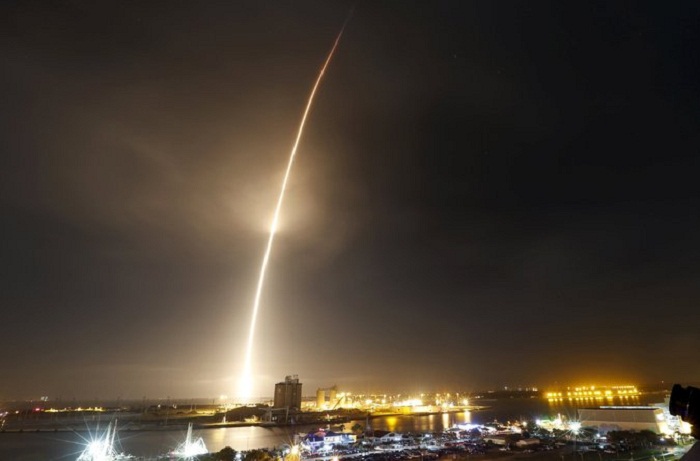With the rush of sound from the rocket engines, Mr. Musk, who was at the launch site in Florida, said he initially thought the landing was a failure, ending with an explosion. But then he heard from mission control that the booster was standing, in one piece.
For SpaceX, the 8:29 p.m. liftoff of the Falcon 9 rocket from Cape Canaveral Air Force Station was a threefold success.
Blue Origin`s reusable New Shepard rocket successfully landed after a test launch on Monday.Blue Origin Launches Bezos’s Space Dreams and Lands a RocketNOV. 24, 2015
The SpaceX Falcon 9 rocket broke apart after launch on June 28.Failure of One Metal Strut Seemed to Doom SpaceX Falcon 9 RocketJULY 20, 2015
SpaceX Founder Releases Photos of Rocket’s Crash LandingJAN. 16, 2015
First, it marked the company’s return to flight after half a year. In SpaceX’s last launch attempt, a rocket taking supplies to the International Space Station disintegrated. (This time, the rocket was carrying a commercial payload: 11 small data-relay satellites for Orbcomm of Rochelle Park, N.J.)
Second, SpaceX’s upgraded design for its Falcon 9 rocket worked flawlessly. The liquid oxygen was chilled to minus 340 degrees Fahrenheit, about 40 degrees colder than on earlier flights, and the kerosene fuel was cooled to 20 degrees instead of 70 degrees.
Mr. Musk explained last week via Twitter that the lower temperatures improved performance of the rocket engines.
Most significant to SpaceX’s ambitions, however, is that after the second stage of the rocket with the satellites continued on to orbit, the engines of the booster stage reignited to turn it around, back to Cape Canaveral. Ten minutes after launching, it set down six miles to the south at Landing Zone 1, a former launch complex for Atlas intercontinental ballistic missiles that SpaceX has leased.
“The Falcon has landed,” a launch commentator said during SpaceX’s webcast as applause and cheers erupted at SpaceX’s California headquarters, followed by chants of “U.S.A.! U.S.A.!”
SpaceX had twice tried to land its Falcon 9 boosters on a floating platform in the Atlantic. Both times, the boosters reached the platform but fell short of a successful landing. The first time, the rocket ran out of hydraulic fluid, crashed and exploded. The second attempt was closer, but the booster tipped over.
If rocket stages can be refurbished and relaunched, the cost of traveling to space could be greatly reduced, Mr. Musk has said. He said SpaceX planned to refly the rocket booster. “It’ll be straightforward, actually,” he said.
Mr. Musk said it would take a few years for SpaceX to sort through the process of reusing rockets.
SpaceX plans two launches next month: another commercial satellite and an ocean science satellite for NASA. It aims to resume supply missions to the space station in February.
More about:
















































